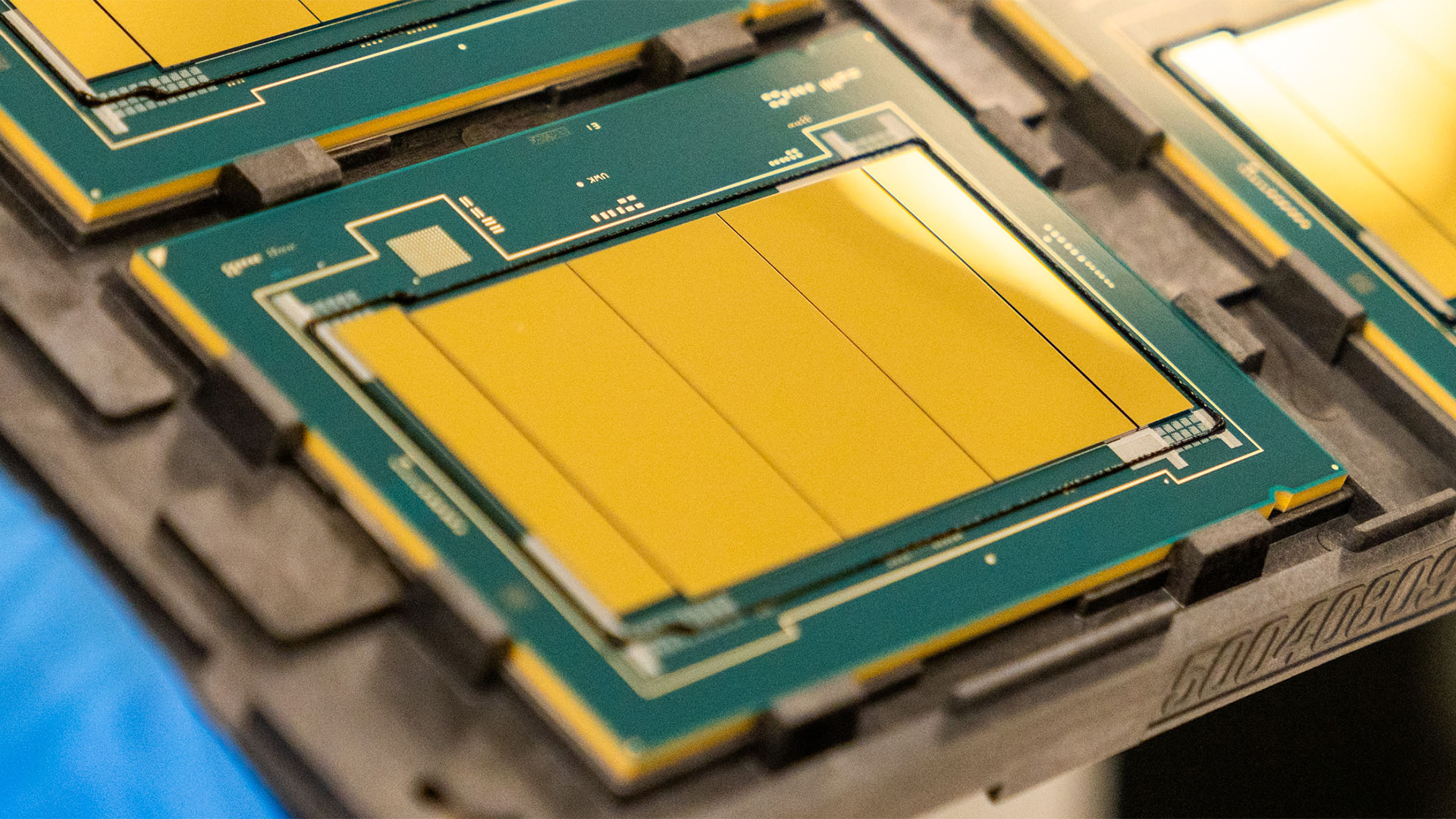Granite Rapids shows up on CPU-Z boasting 80 cores and 672MB of L3 cache

@yuuki_ans on X (Twitter) shared a CPU-Z screenshot of an 80-core Granite Rapids Intel Xeon engineering sample, displaying several major specifications of the new chip. The chip comes with 80 cores and also features 672MB of L3 cache, a 2.5 GHz max frequency, and a 350W TDP.
Sadly we have to take most of these specifications with a huge grain of salt, it's obvious that CPU-Z is not reporting some of the CPU specifications correctly. For instance, if you look at the thread count, CPU-Z displays a whopping 320 threads that are enabled on the CPU. Granted, this massive thread count might be legit, but there's nothing known about Granite Rapids that would indicate a massive change in Intel's hyperthreading technology would enable 320 threads on just 80 CPU cores.
But assuming that all of the other specs are legitimate, it looks like Intel is being super aggressive on its L3 cache upgrades compared to Emerald Rapids as well as core count increases. The massive cache size represents a nearly 6X capacity improvement from Intel's flagship Sapphire Rapids CPU and a 2X upgrade from Intel's flagship Emerald Rapids chip the Platinum 8592+. It is also just 96MB shy of AMD's EPYC 9384X and 9184X 3D-VCache CPUs which sport 768MB of L3 cache. Besides L3, the chip reportedly has 320MB of L2 cache and 10MB of L1 cache.
花岗岩鸡柳,啃不动啊……后面还有金刚石鸡柳……---CPUz识别有错误,自行分辨一下……(步进和修订有点太早期了,有点菜) pic.twitter.com/wEG8Vh3g0HMarch 28, 2024
Core count is also massively increased. The 80-core Granite Rapids chip has 20% more cores than Intel's flagship Emeral Rapids 8592+ CPU and 25% more cores than its Sapphire Rapids flagship. This is the first Intel server CPU in a long while that actually comes close to matching AMD's mainstream EPYC server processors (not accounting for Zen 4c variants). We aren't even sure if this is the flagship SKU, so there could be even higher core count Granite Rapid chips on the horizon.
The chip's 350W TDP reveals that Intel is keeping its TDP configuration the same on Granite Rapids as it is on Sapphire Rapids and Emerald Rapids, at least on this 80-core model. This is good news for efficiency, and means that Intel is not boosting its TDP in line with the higher core counts Granite Rapids will be shipping with.
The CPU-Z screenshots also reveal performance benchmarks of the Granite Rapids chip, however, the results are so bad they don't give us any clues about the chip's real performance. For context, we can't find any CPU-Z benchmarks of Emerald Rapids, and after checking out a CPU-Z benchmark result we got from AMD's flagship EPYC 9654, the Granite Rapids chip is nowhere even close to the AMD CPU's performance level.
Granite Rapids is Intel's next-generation server CPU architecture that will likely be released in the next few months. The new architecture sports a brand-new performance core codenamed Redwood Cove with a host of performance enhancements and extra features compared to Sapphire Rapid's P-cores. The most noteworthy addition is the inclusion of AMX support with FP16 acceleration which is a key addition that will boost AI inference performance. It also comes with new prefetch and brand prediction tech as well as higher floating point IPC performance.
Get Tom's Hardware's best news and in-depth reviews, straight to your inbox.
Granite Rapids will also be the first architecture to come with Intel's bleeding edge 3 nm Intel 3 process technology, which will bring an 18% performance-per-watt gain and high-density libraries that weren't included in the Intel 4 process. Intel was originally going to build Granite Rapids on the Intel 4 node, however it decided to delay Granite Rapids to 2024 to move it up a notch to Intel 3.
With all of these core, cache, and architecture improvements in mind, Granite Rapids is shaping up to be one of the largest performance jumps from Intel in a long time.

Aaron Klotz is a contributing writer for Tom’s Hardware, covering news related to computer hardware such as CPUs, and graphics cards.
-
Reply
But, the 320 thread count is probably fake
Granted, this massive thread count might be legit, but there's nothing known about Granite Rapids that would indicate a massive change in Intel's hyperthreading technology would enable 320 threads on just 80 CPU cores.
You shouldn't be labeling any CPU-Z entry as FAKE, because that's not the case most of the time.
A more appropriate term would be "misleading", "incorrect", "inaccurate", since the CPU-Z software has trouble reading data on this chip, because this a very early sample since it has a "0" stepping.
Family 6 Model D has also being mentioned. So because of this very early nature of this chip, the software is having trouble identifying the exact specs of this ES SKU.
But in any case, as per this leaker, there are TWO 80 core chips here, and because of this the CPU-z is unable to recognize the two chips and hence it is listing the thread counts for both of them.
This is what has been claimed in this tweet. "Two 80c, this dual channel has 320 threads"
1773306068879261872View: https://twitter.com/yuuki_ans/status/1773306068879261872
So now based on the above tweet, the whole cache count also changes.
Two 336 MB pools of L3 cache for a total of 336 MB L3 cache per CPU, and two 160 MB pools of L2 cache for a total of 320 MB L2 cache per CPU. Combining them we get 656 MB of total cache ?
So the claim of 672MB of L3 cache is not correct. -
TechyIT223 The article hasn't been corrected till now. But now those cache counts do make sense after all there are 2 chips being tested.Reply